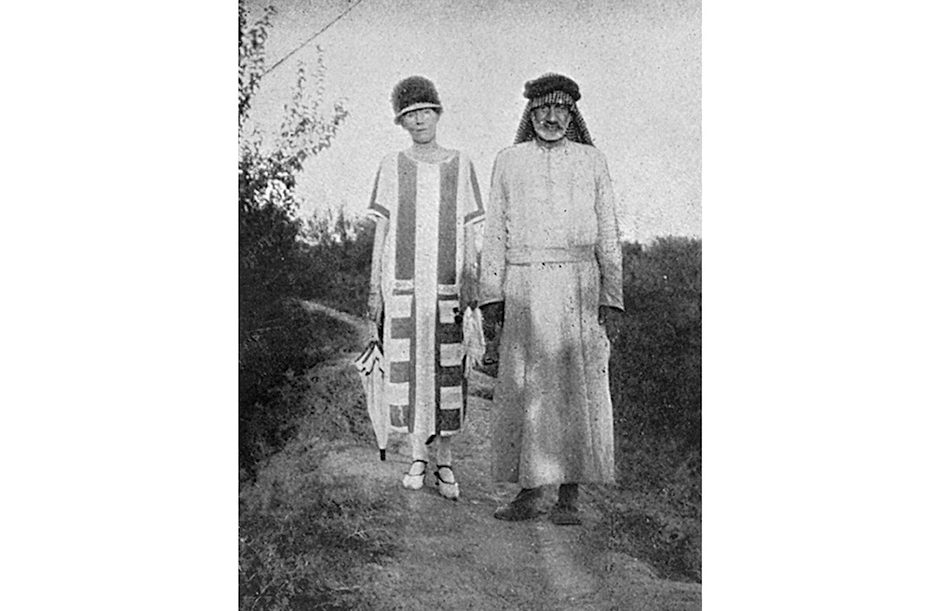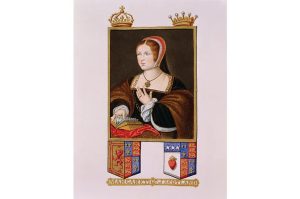Green-eyed Gertrude Bell belongs in Charles Doughty’s Travels in Arabia Deserta, that slab of velvety antique that enthralled the English (they were not yet British) in the love-affair phase of their relationship with the Arabs. County Durham-born to a wealthy industrialist father, Bell (1868-1926) was a key player when the Powers tried ineptly to mould the Middle East, as the Ottoman Empire crumbled. She is well covered in the literature and appears in a large hat alongside Churchill in conference photographs. But as Pat Yale announces in this new book: “Her time in Turkey has been largely overlooked.”
Bell traveled extensively in that country before the first world war (starting in 1899) and in its aftermath. She wrote two books about it, The Thousand and One Churches and The Churches and Monasteries of the Tur Abdin, as well as another three in which it featured, plus diaries, voluminous letters and articles in the Revue Archéologique. Yale draws extensively on the sources and quotes judiciously. A British-born resident of Turkey, a guidebook writer and a Turkish-speaker, in these pages she retraces Bell’s steps. “I hoped,” she says at the outset, “to see how much had changed in Turkey and how much had stayed the same.”
The book starts, as Bell did, in Istanbul (Constantinople then), dips south as far as Bodrum and works east through the Anatolian interior, following the Syrian border in the south and continuing almost to the Iraqi border. Bell traveled on a horse, in a private train compartment and, across the Tigris, on a kelek, a raft buoyed by an inflated goatskin. Yale follows close behind in a dolmuş (shared minibus).
These days Bell skulks in the imperial doghouse. But I admire her as a recorder of the soft tissue of history
The reader sees Bell purchasing bolts of silk, scaling mountains, arguing over hotel bills and co-leading an archaeological dig in Binbirkilise (“See what we have got out of it!” she wrote to her beloved father. “Two great Hittite sites and a vast amount of unexpected Byzantine remains.”) In Konya, the erstwhile capital of the Selçuk Sultanate of Rum, she pays a visit to the turquoise-domed tomb of 13th-century mystic poet Rumi (“A real pilgrimage, for I know some of his poems and there are things in them not to be surpassed”). Following Miss Bell is more granular than the biographies and academic material.
Yale talks to everyone and allows them to speak for themselves on the page. The book has a homely tone one doesn’t associate with the majestic Bell. “I pass a pleasant evening in a hotel,” writes Yale in Milas, “shelling peas on the balcony with the owner’s wife.” On a hill overlooking the Meander an unseen beast takes a chunk out of her leg, and in Silvan in the benighted south-east, people stone her.
Bell cast a long shadow over the Middle East in the years following her Turkish peregrinations. These days she skulks in the imperial doghouse. But I hugely admire her achievements as a recorder of the soft tissue of history. She comes out close to the top of any list of female travelers (entertainingly described as “solo” even though a retinue of factotums trailed in their wake). Freya Stark said Bell “never stayed anywhere long enough to get to the heart of things.” That’s the spirit, girls!
Yale’s book is a fine guide to the Sick Man of Europe before the Powers intervened in neighboring lands with such spectacular ineptitude. She is a close observer and a dogged detective, determined to work out exactly where Bell stayed or what route she took. She switches adroitly between the close-up lens and the wide angle, and addresses the troubles of contemporary Turkey with a light touch, even though the thud and crash of bombs are never far off.
Deploying the narrative present for herself (“As I start to flag”), Yale marshals imagination to color in her portrait of an ambulant Bell (“She took care to lift her skirt to prevent it from trailing in the dust”). She is not afraid of speculation (“I imagine him greeting her at his front door”), usually deadly in accounts of this kind but here of a piece with the genial, conversational tone. This book is entirely without literary pretension and why not? I thoroughly enjoyed it.
It is an old fashioned “footsteps” book with no stuntish symbolism of the personal redemption variety. Yale admires Bell with “passion” and remains endearingly close to her in spirit (“I glimpse her ahead of me”). She concludes by laying boughs of purple cranesbill on the Gallipoli grave of Bell’s true love. I do not know if Bell’s personality emerges from these pages, beyond the fact that she was spirited and clever and didn’t mind riding across rough ground for seven hours in a storm. But that, I can’t help feeling, is enough.
This article was originally published in The Spectator’s UK magazine. Subscribe to the World edition here.





















